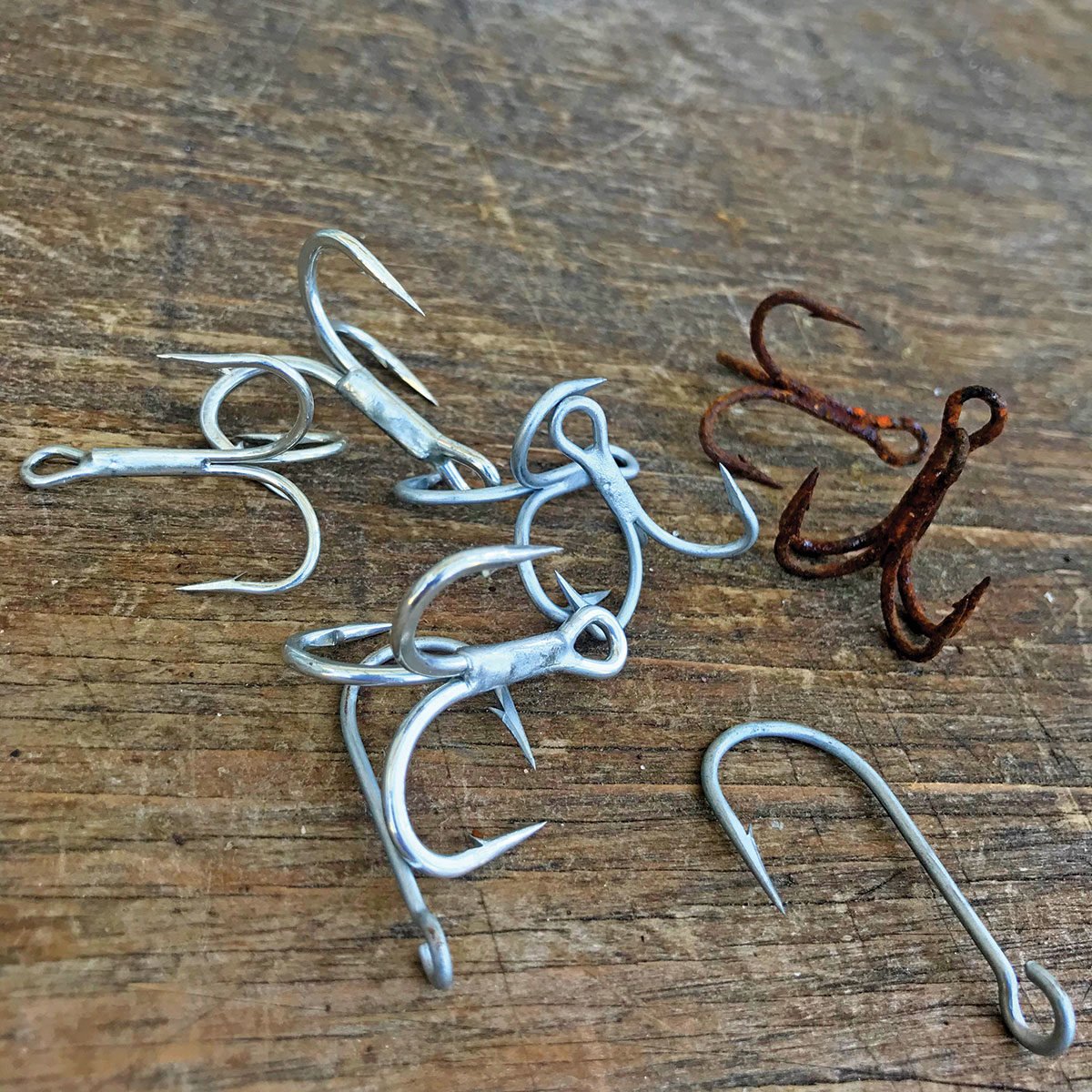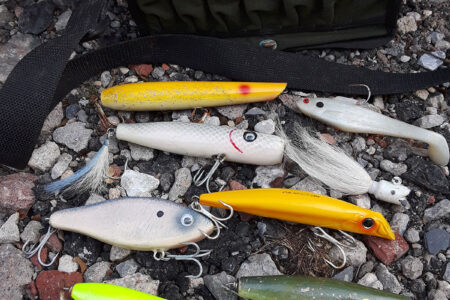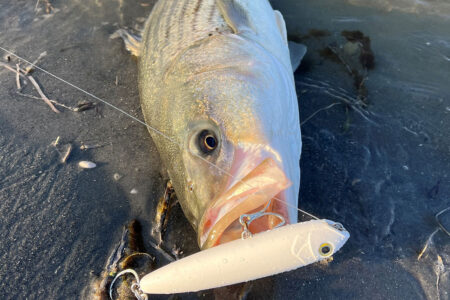
With the fall run well upon us, now is the time to make sure your hooks are in tip-top shape!
One of the steps for gearing up for the fall run, for me at least, is making sure my plugs are all going to hold up and perform the way they should. This often means swapping out rusted/damaged hooks for fresh ones. Sometimes I’ll even take off stock treble hooks for stronger “upgraded” hooks in anticipation of that big fall bite. The use of a hook sharpener can bring dulled hooks back to life that aren’t too rusted out, too. The last thing you want to do is lose an absolute cow striped bass due to hook failure!
The first thing I want to address is using stronger hooks in place of stock ones. I tend to notice after unhooking and releasing many fish that the hooks start to bend and twist from working them out with pliers. It won’t even take a big fish to do something like this. Using a stronger hook will just increase the overall longevity of it. I found myself a few nights using pliers to bend back bent hooks. This will reduce the strength of a hook making it more prone to bending or snapping. Using a 6x hook I’ve never seen this happen. It’s honestly one less thing to worry about.
Crushing barbs also makes the whole unhooking process a lot easier and results in less damage to the fish, quicker unhooking and lower mortality rate on released fish. A simple pair of pliers is all you need to do this. Just taking a few seconds to do this on each plug can make for a lot less headaches out on the water, especially at night when the light is limited. Bluefish can be the worst or even most dangerous sometimes with uncrushed barbs. They always fight until the very end and tend to jump at you when on a “short leash.” I’ve seen many anglers struggle to unhook big bluefish with barbs that haven’t been crushed. This simple tip makes this process a lot safer. Even if you do accidently put a hook though your hand, a crushed barb lets you pull it out easily instead of having it cut out at the hospital.
I have heard quite a few people have been switching over to inline single hooks, which in fact does benefit the fish. I do have to say though that running double inline hooks did increase the amount of missed hooksets that I had. This can be extremely frustrating especially on a slower night of fishing where every bite counts. My suggestion is to run a treble on the front with a single on the back. Bass usually hit the front treble with the rear hook snagging them. Using a single in back will make removal a lot easier compared to a treble in its place. Crush barbs on top of this and unhooking will be a breeze.
This past season I’ve been experimenting with a few different brands of hook. I have been trying to develop the pros and cons between certain ones. It’s fun for me to use different ones on different plugs and see how they perform compared to another. Hooks can alter the action of a plug. Some have a long shank vs a short shank. I found the short shank a little stronger. The fish is not able to get leverage that they would on a long shank. Certain hooks are heavier than others, too, and while this does offer extra strength, it can change the original action of the plug. Remember that some of these plugs are built to float with certain hooks, and a heavier hook can even sink a plug. Use a trial and error method and test swim different combos. When you find one that works, put it into action.





